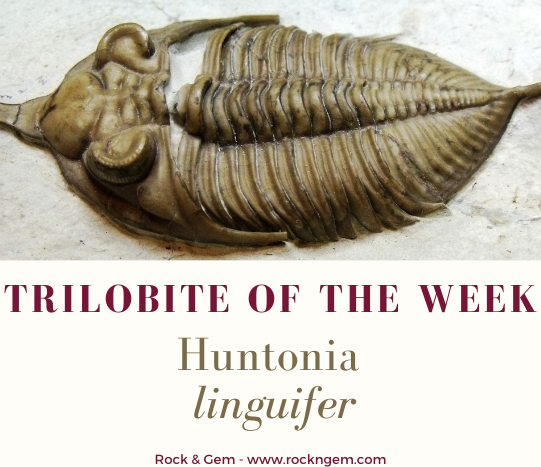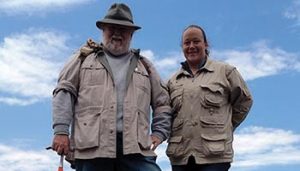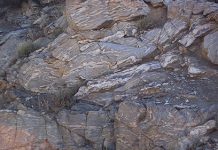
By Joseph “PaleoJoe” Kchodl
Did you know trilobite get their name from the three distinct “lobes” running vertically through their body section? In this week’s trilobite review, we’re looking at the HUNTONIA linguifer.
This trilobite is very similar in size and shape to the DALMANITES of New York state. This trilobite is fairly common in the Devonian deposits of the Haragan formation in the area of Coal County, Oklahoma.
The cephalon is roughly semi-circular and ends in very long genal spines. It has a very prominent snout, furrowed glabella, and very prominent, high set, crescent-shaped eyes on the cephalon. The last thoracic segment prior to the pygidium has a slightly longer spine than the other thoracic segment spines. The pygidium has a long tail spine.
These trilobites can be found averaging around three inches, including the tail spine, and sometimes can reach up to five inches.

About the columnist: Joseph “PaleoJoe” Kchodl is a paleontologist, educator, veteran, author, fossil dig organizer/guide, business owner, husband, father, and grandfather, and fossil fanatic. For decades, he’s spent hours in classrooms around the Midwestern United States and beyond, speaking to school children about fossils and fossil hunting. Visit his site to purchase fossils, contact PaleoJoe, visit www.paleojoe.com.
Plus, learn more about PaleoJoe and his daughter PaleoJen and their paleontology exploration partnership in an the article “Fueling a Passion for Paleontology“.















